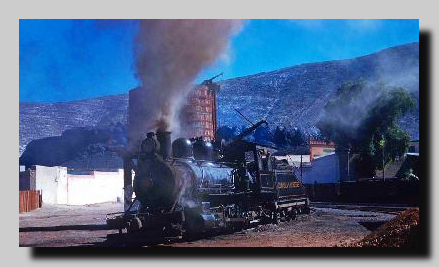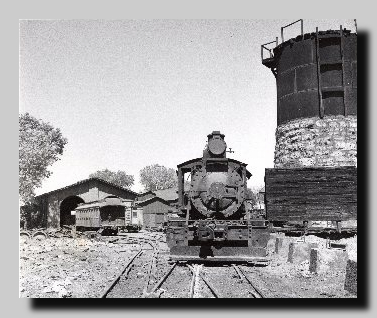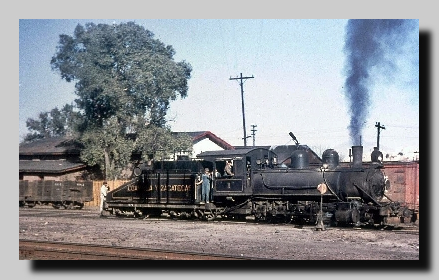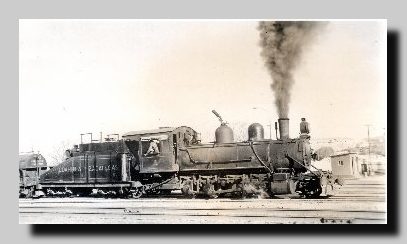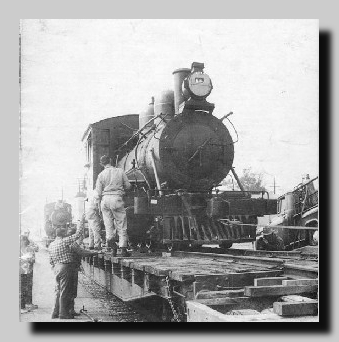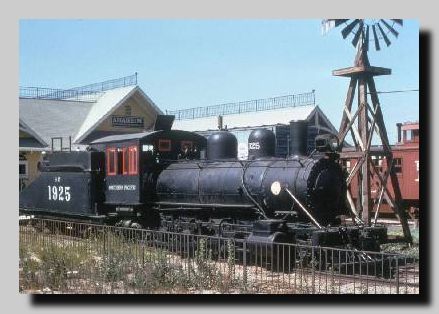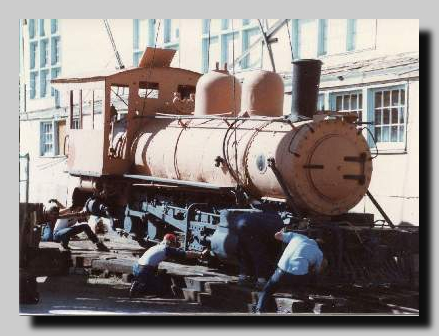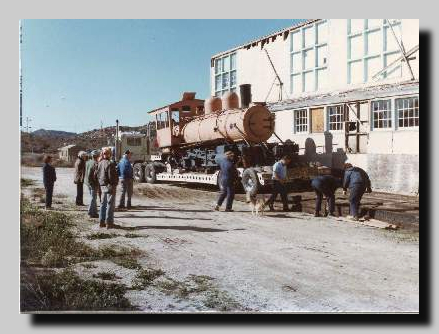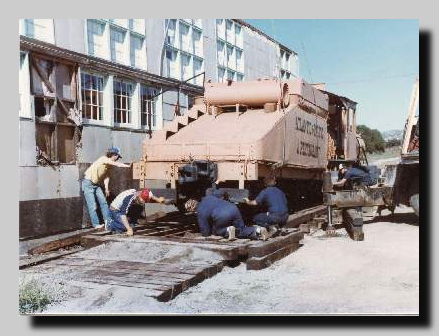C&Z #1
|
No. 1 in Concepción del Oro, taken 1960. From the collection of Enrique Garcia Vega. Midwest Central Railroad's second oldest locomotive, No. 1, was ordered by the British-owned Mazapil Copper Company for the Coahuila and Zacatecas Railroad (Ferrocarril Coahuila y Zacatecas, FC. C. y Z., or most commonly, C.y Z.) in Mexico. No. 1 was built by Baldwin in July 1897 as a 10-26-E class locomotive, meaning it is a 2-8-0 with cylinders bored to 16". It has a cylinder stroke of 20" and has 38" drivers. No. 1 weighs about 38 tons, and originally had a wheelbase of 47'-6". For most of No. 1's career on the C.y Z., it was used as a switch engine in the Saltillo yard, hence the slope-back tender. Originally, No. 1 was built as a wood burner with a "bonnet" (sunflower) stack, short smokebox, 23" diameter box-style kerosene headlight, and a vertical stave pilot fitted with M.C.B. couplers. It had LeChatelier brakes on the locomotive and Westinghouse Automatic air brakes on the tender and train. The Westinghouse air brakes were supplied by an 8" air compressor mounted on the engineer's side. It was also built with a plethora of other unique features, such as a cab gong, a Westinghouse air signal system, an iron cab, a slope back tender, Raoul tender and pilot truck journal boxes, sway-motion tender trucks, and helmet-style domes. It was painted in black and gold, style 217, with a planished iron boiler jacket. Around 1898, No. 1 was converted to burn coal with a signature Baldwin straight capped (fluted) stack and new grates. In 1903, the Nacionales de Mexico converted to standard gauge. Since the N.deM. and C.y Z. connected at Saltillo, No. 1 was fitted with dual gauge coupler pockets. For most of its working life, No. 1 could be seen sporting a footboard pilot, a cast straight stack, a "quick-opening" (dart) smokebox door latch, a raised cab, a 9.5" Westinghouse air compressor on the fireman's side, and round-case kerosene headlights that had been converted to electricity. However, it is unknown exactly when all these changes were made. It was converted to burn waste oil in the early 1960s. Sometime very late in its working life, No. 1 was rebuilt with parts off of retired C.y Z. 10-26-E locomotives, such as C.y Z. No. 2's tender, the second No. 3's vertical stave boiler-tube pilot, the second No. 3's Westinghouse locomotive brakes, and various running gear components off No. 2 and No. 4. Because of this, No. 1's running gear appears to be quite serviceable. When the Coahuila y Zacatecas dieselized in 1963, No. 1 was retired from service. In 1965, Early West Railways, Inc., purchased No. 1 along with C.y Z. No. 6, C.y Z. No. 12, and a plethora of freight and passenger equipment. They planned to operate a steam tourist railroad at the Puddingstone State Park in Pomona, CA. However, when Early West Railways failed to come to fruition, No. 1 was sold to the Specialty Restaurants Corporation of Long Beach, CA. Specialty Restaurants Corporation displayed No. 1 at the "Loose Caboose", a railroad themed restaurant in Anaheim, CA, until the restaurant closed in 1981. In 1983, No. 1 was donated to the Pacific Southwest Railway Museum Association of Campo, CA, by Specialty Restaurants Corporation. It was delivered to P.S.R.M.A. in November of 1983 and was cosmetically restored. In 1988, P.S.R.M.A. sold No. 1 to the Midwest Central Railroad, as it did not fit in with their collection. An in-depth analysis of Coahuila y Zacatecas No. 1's condition will happen in the near future.
|
|
